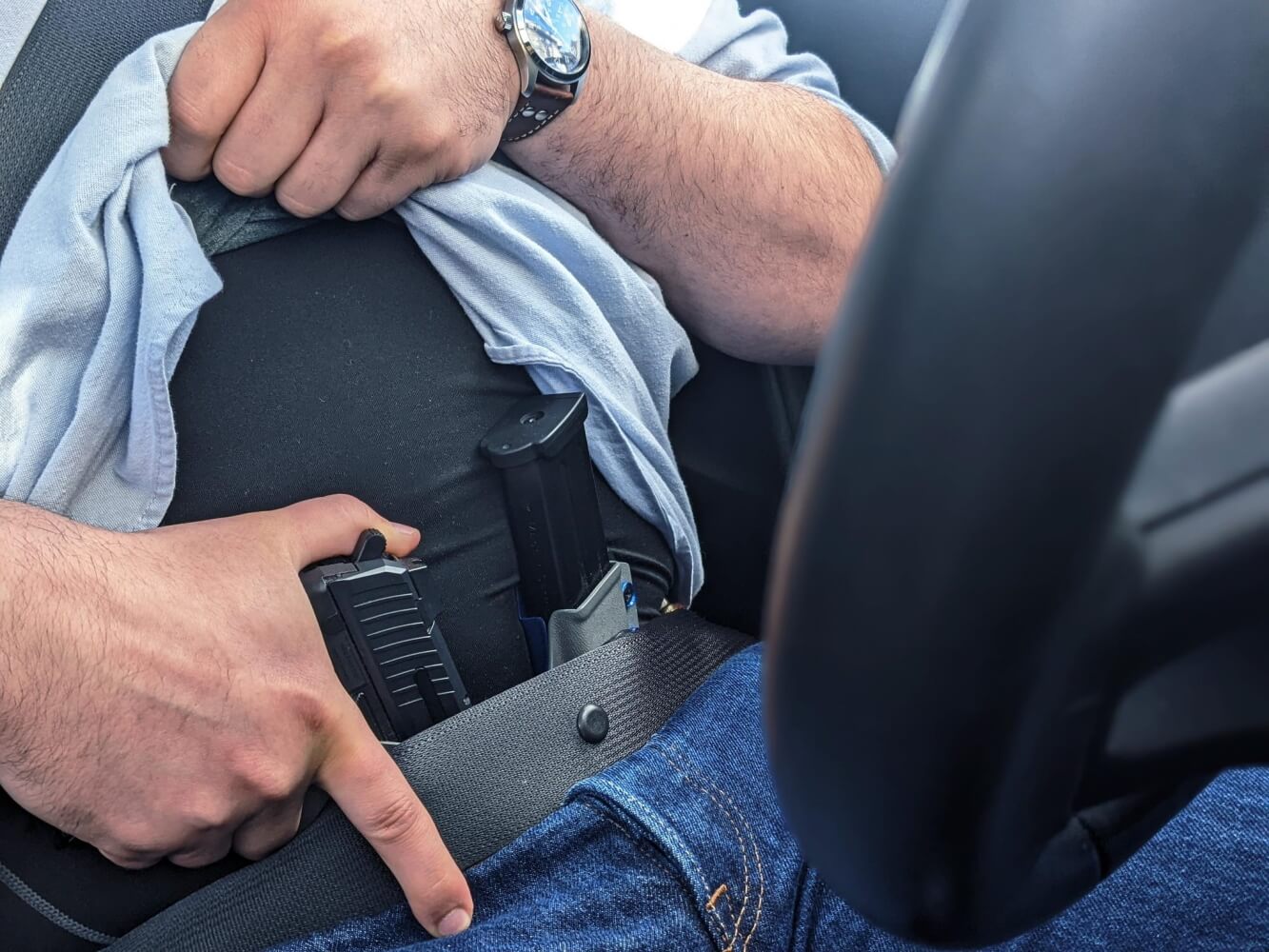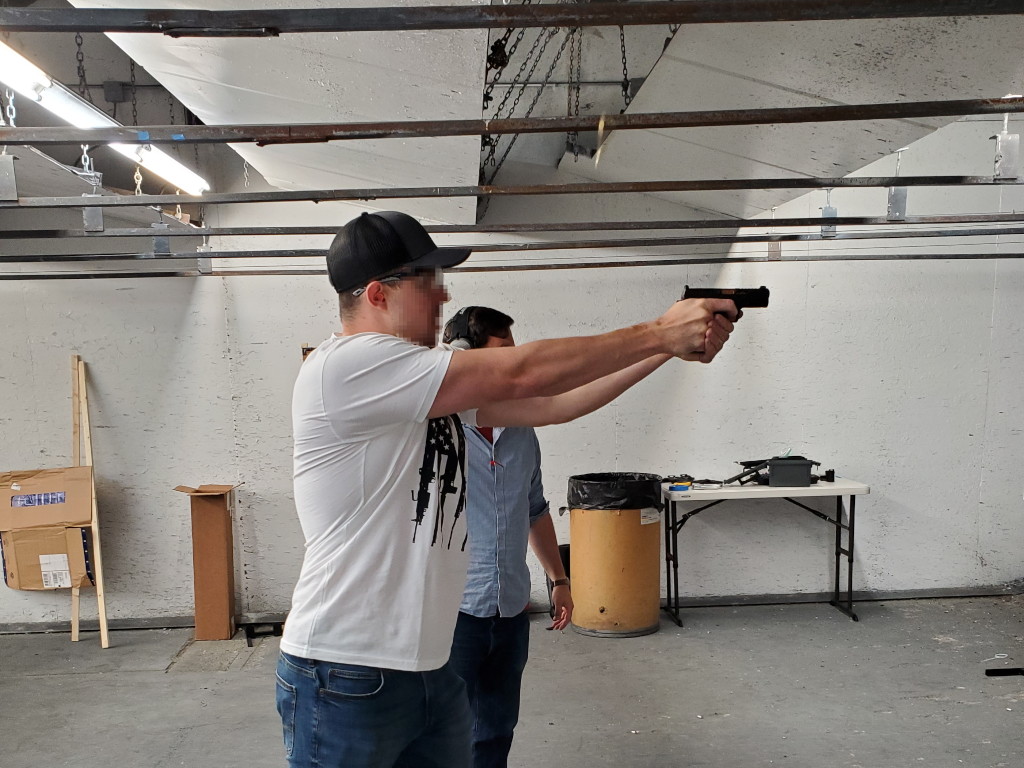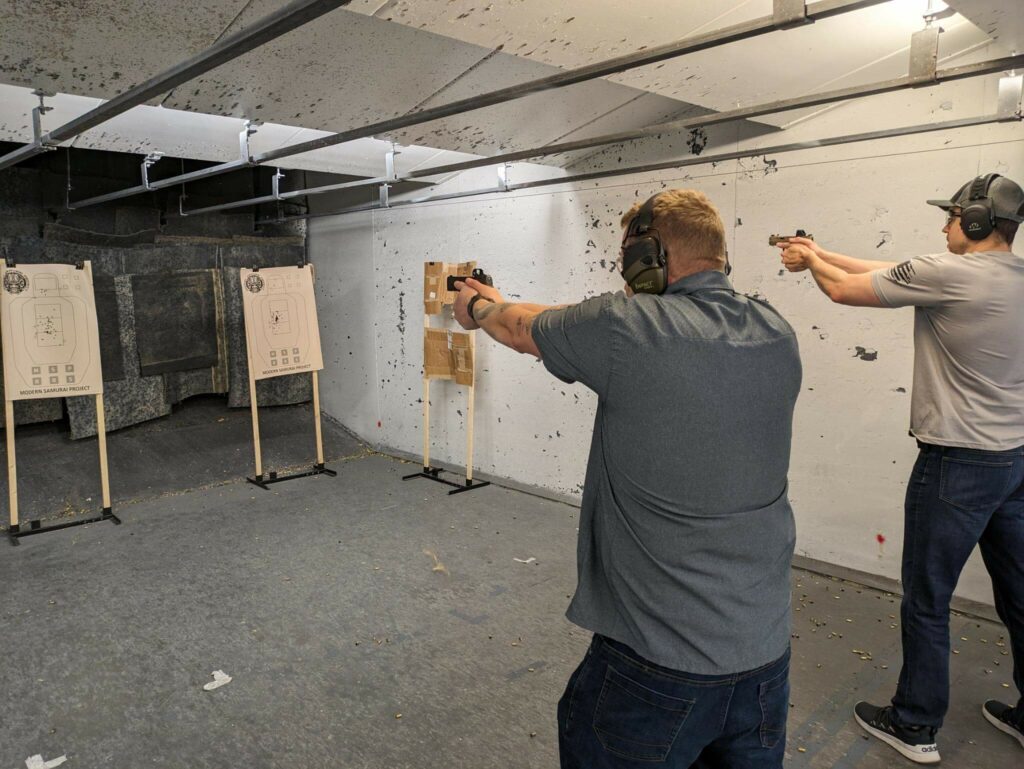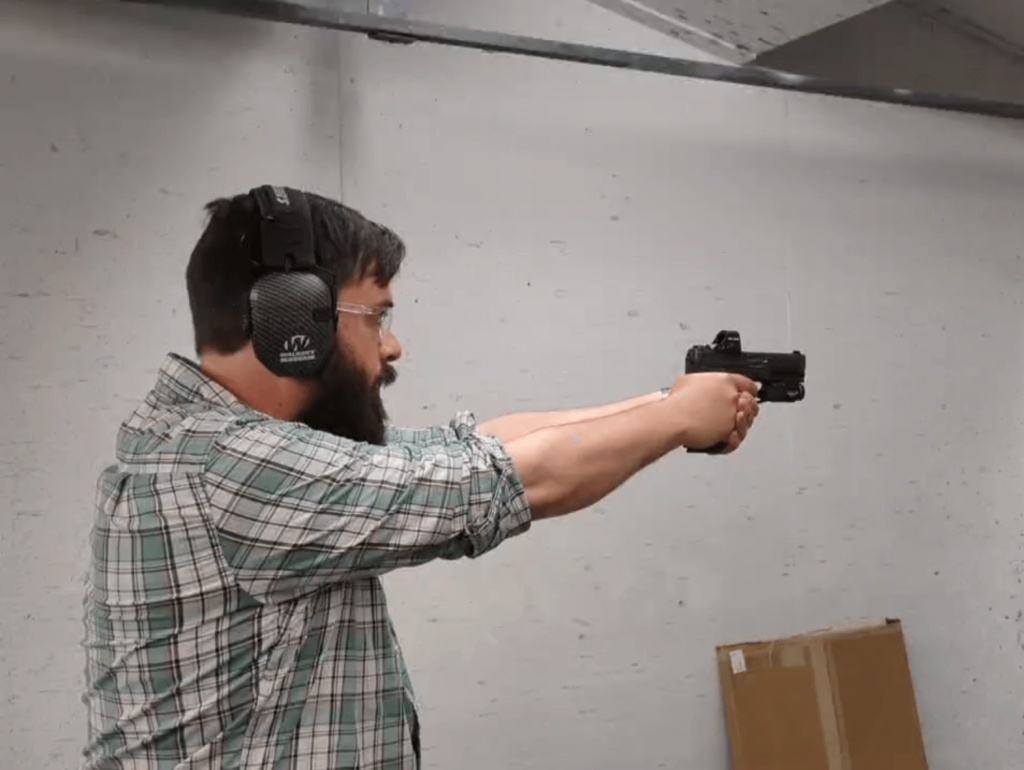Car Carry Considerations
Car carry is simultaneously one of the more important elements of concealed carry and one of the toughest to train. Dry fire in a car is hard enough to do, between finding a safe direction to practice your draw, setting up a meaningful target to aim at, and not freaking out your neighbors in the process. And unless you have a range with a vehicle to train in, actually training to shoot from a vehicle can be difficult. Below are a few tips on how to dry fire train in a car and get better at your car carry.
Appendix Makes Drawing in a Car Much Easier
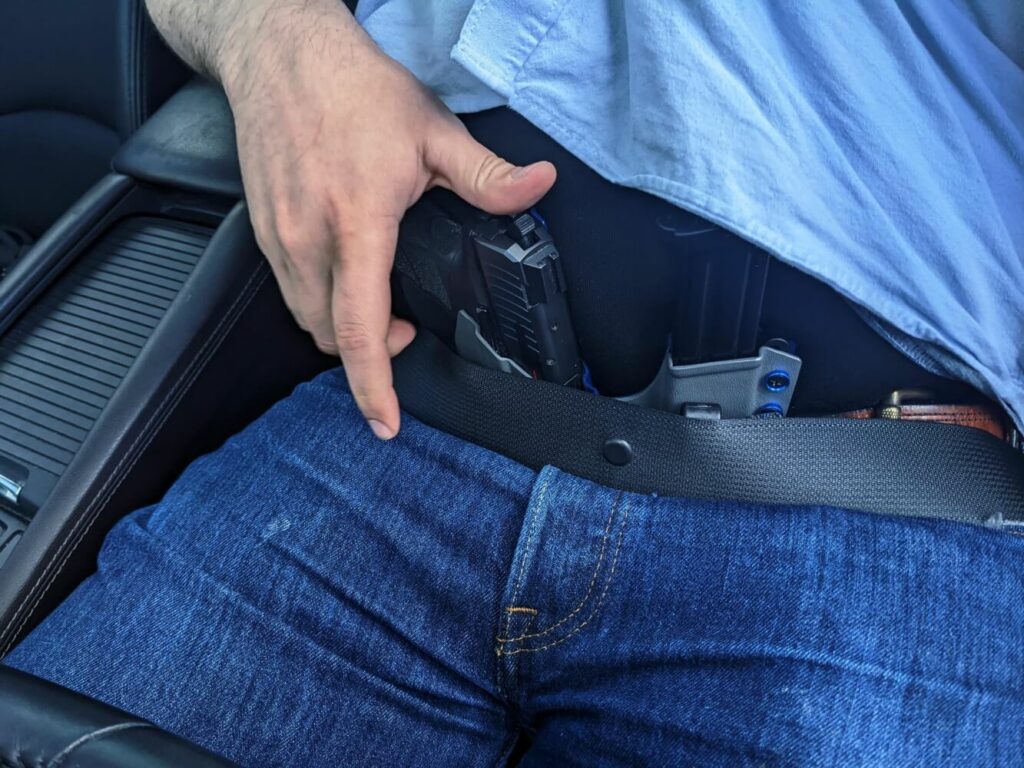
There are certainly ways to draw from strong side while seated in a vehicle, but I’ve found appendix carry makes car carry much easier. You don’t have to mess with the seat belt, there is no need to draw the gun across your body, and there is no fighting the center console. You don’t even have to blade your shoulders or shift your body if if you don’t want to, although many do find it easier to pivot in the seat. Simply run the seat belt across your hips as you would without a firearm, and let it rest in front of your holster. The only real difference here is the staging of your cover garment over the firearm and seat belt, to make clearing it easier. Having your shirt over the seat belt and gun makes clearing it easy, and you can establish the same grip you do when standing up.
Draw the Muzzle High in Car Carry
Once you’ve established you grip and go to clear the holster, you want to “draw high”, that is pivot the barrel of the gun up so that as it passes your holster, it immediately comes up and points towards your steering wheel. The goal here is twofold: first, you want to avoid flagging your own torso, and second, you want to avoid flagging your own torso. Seriously, this is the sketchiest point of an car draw, and all it takes is an inattention to detail or a small lapse in finger discipline and you have an extra hole in you. If you are lucky, it went into the fleshy part of your leg and missed anything important. If you aren’t….The point here is that when drawing from a seated position in a car, you need to exercise great care, which is why dry fire is so important. It’s easy to get tangled up or or fail to think about where your firearm is pointing when training from an unfamiliar position. Getting your reps in in a safe environment is important so that you are confident in your performance when it matters.
Blade the Hand or Shift the Shoulders
Once you have cleared your holster and are pointing the gun in a safe direction, you have a couple good options depending on the nature of the threat and what you need. One is to simply pivot the firearm towards the driver side window and use your support hand, bladed, to help give support to what is effectively a strong hand only shot. The other is to pivot your shoulders and establish a full grip before firing. Ultimately that choice will be depend on the circumstances around deploying your firearm such as distance to the attacker, immediacy of the danger, and your confidence shooting strong hand only.
Car Carry Sighting
A note on your sight picture when drawing from car carry. It is unlikely you will get a full sight picture as you bring your firearm up to fire out your window. Depending on what position you are in and other factors, you may need to adjust your sighting to ensure you are appropriately aiming your firearm, while still reacting quickly to the threat. As with your position in the car, your level of aiming will be directly related to the factors of the engagement like distance, sighting system (irons vs. red dot), and immediacy of the threat. Having a target to focus on so you can practice sighting from the car is important in being effective in shooting from a car.
Belt, Door, and Bail
Once the threat is neutralized, you need to make a determination about what to do next. Regardless of whether you want to stay in your car or move away from your vehicle, once you are ready to re-holster, you need to get out of the car and re-holster standing up. Re-holstering sitting down is a recipe for disaster and there is really no good reason to do it. To safely exit your car you need to hit the seat belt, hit the door, and bail out of the car. Again, this is an important area to train dry, especially if you aren’t familiar with moving while shooting. This will involve releasing your belt with your left hand, opening your door with your left hand, and carefully exiting without flagging yourself with your gun.
Working in and around a vehicle with a firearm is not always intuitive, which is why it’s important to get training. In the meantime, you can check out the below video from Active Self Protection on effective car carry drawing.
Any gear mentioned in this post was purchased for my personal use. I have not been compensated or incentivized by any company for any product reviews, highlights, or opinions.
Upcoming Live Fire Classes
Defensive Pistol Fundamentals – 1
Saturday, January 27th – 9am to 1pm
This class is a live fire training opportunity to work on defensive pistol skills. This first class will focus on fundamentals, including grip, site picture, and draw.
Intermediate Defensive Pistol – 2
Saturday, February 24th – 9am to 1pm
This intermediate defensive pistol class will focus on taking the next step in your firearms proficiency with items like target transitions, reactive targets, and reload drills.
Next Level Defensive Pistol – 3
Saturday, March 30th – 9am to 1pm
This next level defensive pistol class is an advanced class for practicing shooting and moving, transitions, and reactive targets.
Other Posts you Might Like
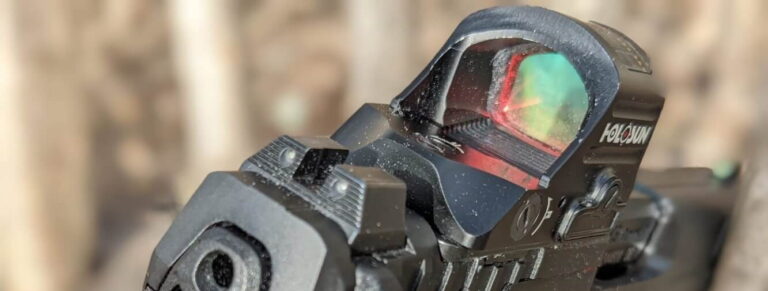
Holosun 407C X2 Review- 12K Rounds Later
*Updated February, 2024* I’ve been carrying the Holosun 407C X2 daily since 2021 and have over 12,000 rounds through it at the time of writing. Below is my experience with it over a few years and a few thousand rounds. Consider this a Holosun 407C X2 Review, just 12k+ rounds later. The vast majority of…
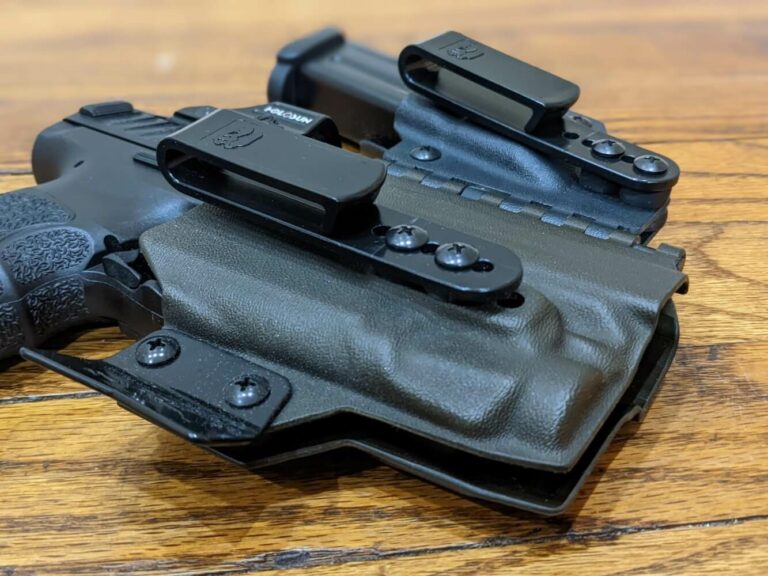
T.Rex Arms Sidecar Review
Updated 12.15.2023 with a reflection on two years of carrying. If you’ve been concealed carrying for any amount of time, you probably have a a collection of various holsters in different combinations for lights, guns, belts, sidecar setups, etc… When I saw T.Rex Arms had come up with a new Sidecar setup using a flexible…
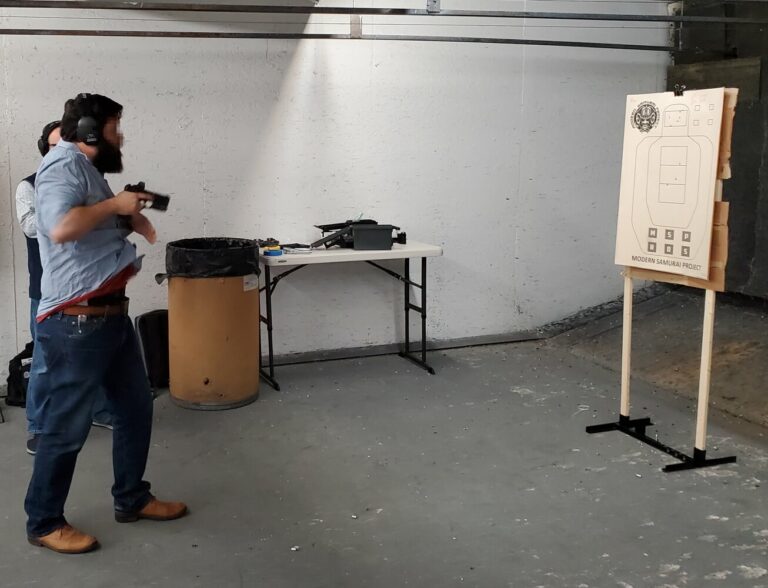
I’ve got my CCL – Now What? Next Steps for Concealed Carry
One of the most common questions I get is what to do once you have your concealed carry permit. Students who have taken a concealed carry class or friends who have just gotten their permit in the mail inevitably ask: Now what? What are my next steps for Concealed Carry? While different people may have…

NeoMag Alias: A Great Low Vis Option
Updated December, 2023 Back in October of 2021, I picked up a NeoMag Alias, a low visibility belt clip option for concealed carry. I’d previously switched to carrying appendix a few months prior and needed something to wear with a suit that didn’t obviously show the clips. Carrying strong side on a suit was easy,…
